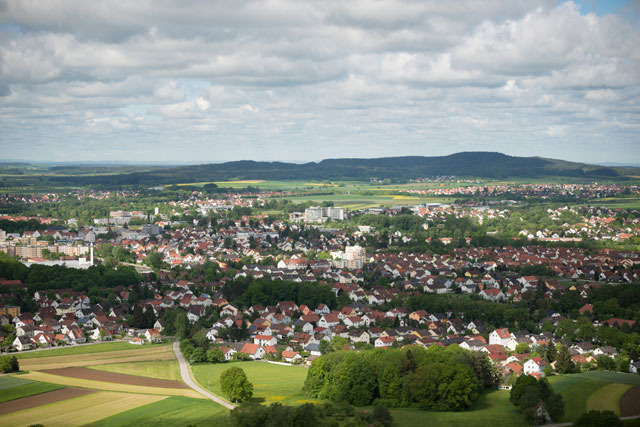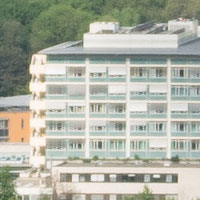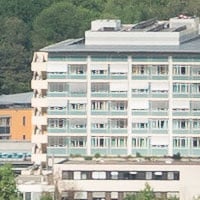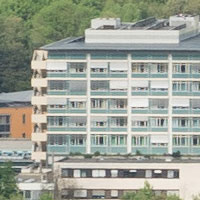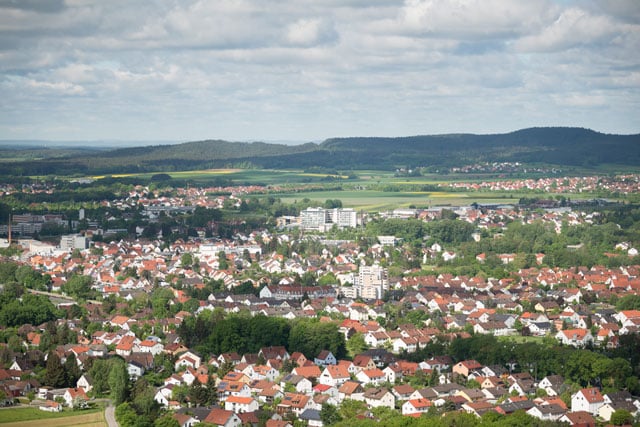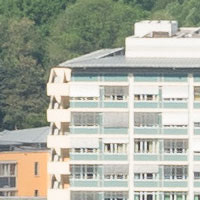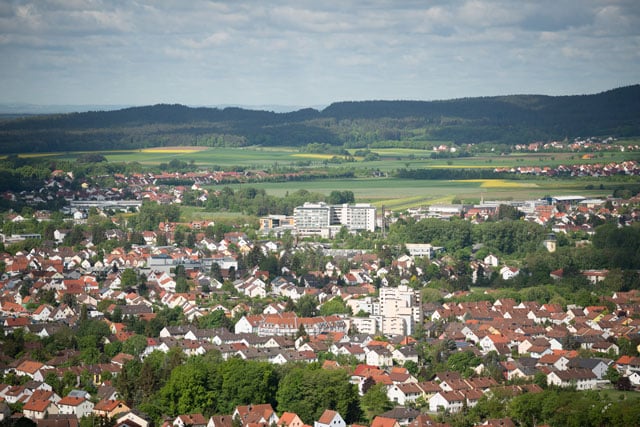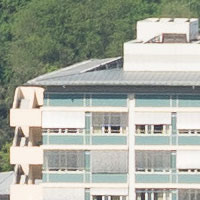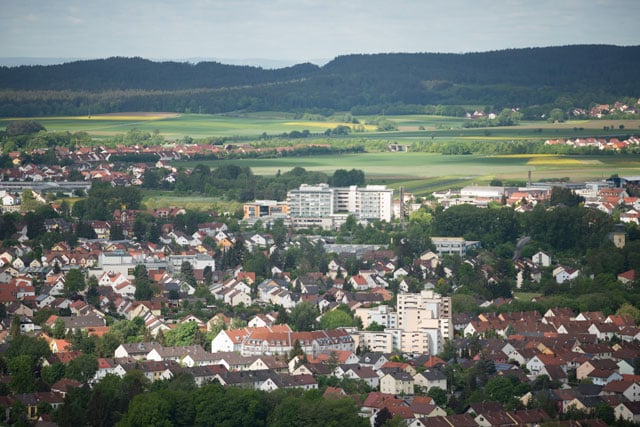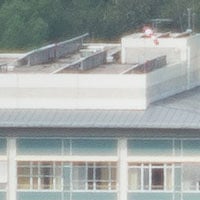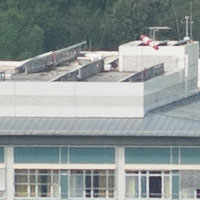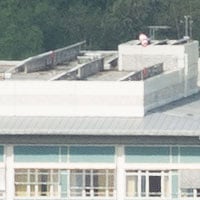Tamron 70-200mm f2.8 VC review
-
-
Written by Thomas
Quality
Testing: Longitudinal Chromatic Aberration
With lenses offering an aperture of f2.8 or larger I test for longitudinal CA (loCA, a.k.a. “axial color” or “bokeh CA”). The lens shows no coloration on the left (foreground) or right (background). This is practically negligible even at extreme situations with very high contrast.
Tamron SP 70-200mm f/2.8 VC Longitudinal Chromatic Aberration (loCA) |
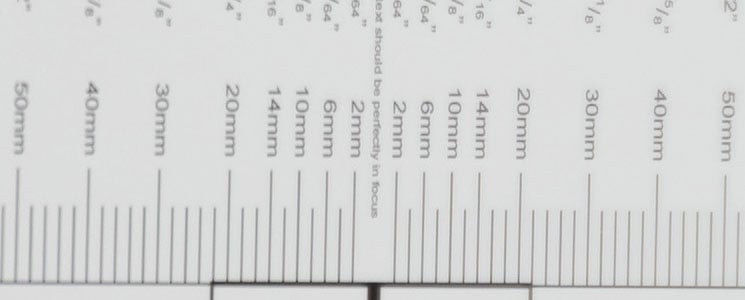 |
| 100% crop, 200mm, f2.8, left=closer, right=farther away |
Sharpness and contrast
Let’s have a look at the theoretical performance (MTF-charts) at the wide and the long end first:
Tamron SP 70-200mm f/2.8 VC MTF | ||
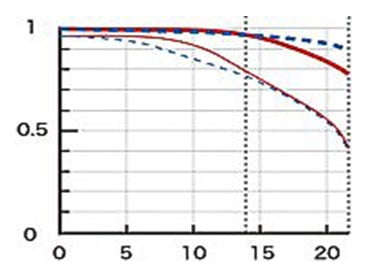 | 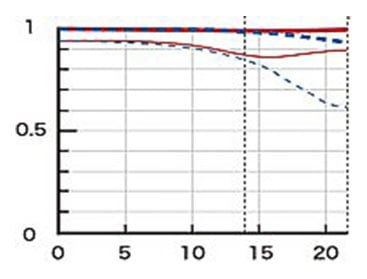 | |
| at 70mm, f2.8 | at 200mm, f2.8 | |
These charts show the lens-performance at the largest aperture f2.8. Higher values are better and the closer the dotted and the continuous lines of each color are together the less astigmatism (= resolution depends on the orientation of the test-pattern) the lens has. The x-axis displays the distance from the optical axis (=center of the sensor) in mm. I’ll show you the real-life performance at 4 mm (center), 13 mm (DX-corner), and 20 mm (FX-corner) on a D800.
From the charts the new lens should perform on a very high level regarding overall contrast at least in the DX image-circle. Sharpness declines gracefully with little sign of astigmatism on the short end but the long end develops some nasty astigmatism beyond the DX image-circle. On paper the lens does look like a solid piece of engineering. But let’s see how this theoretical performance translates into real life results in the sharpness test based on Siemens-stars.
What follows are near-center results (first column) followed by DX-corner results and FX-corner results on a D800. The D800 results from the DX-corner should be a very good approximation for performance on a 16MP DX sensor (like the D7000), because the pixel-pitch of both sensors are the same. But differences in the AA-filter and micro-lens-design of a D800 and a D7000 might yield different end-results.
Processing was done in Lightroom 4.3 from RAW at camera standard settings. Noise-reduction is set to 0, sharpening to 70/0.5/36/10, with no extra tone, color, or saturation-adjustment. White-balance was adjusted to a neutral white and I did some exposure compensation to make the brightness match. CA-removal is ON.
The following are all 100% crops!
Let’s have a look at the performance at 70mm first:
Tamron 70-200mm f/2.8G VR with Nikon D800 100% crop from center | Tamron 70-200mm f/2.8G VR with Nikon D800 100% crop from DX-corner | Tamron 70-200mm f/2.8G VR with Nikon D800 100% crop from FX-corner | ||
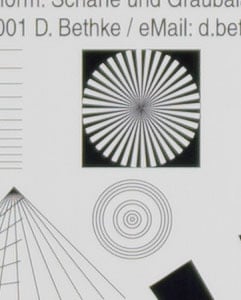 | 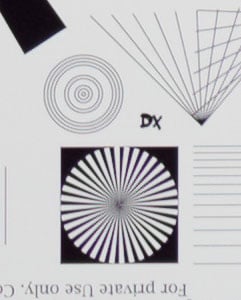 | 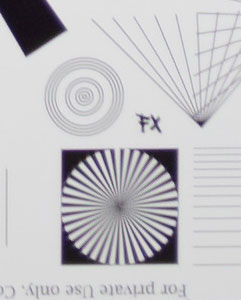 | ||
70mm, f2.8, 100 ISO | 70mm, f2.8, 100 ISO | 70mm, f2.8, 100 ISO | ||
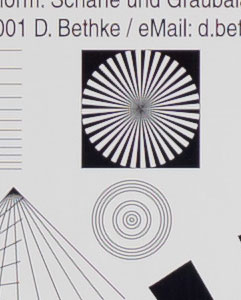 | 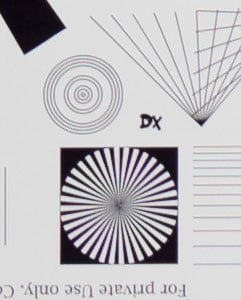 | 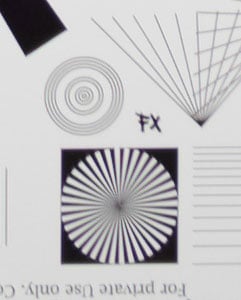 | ||
70mm, f4.0, 100 ISO | 70mm, f4.0, 100 ISO | 70mm, f4.0, 100 ISO | ||
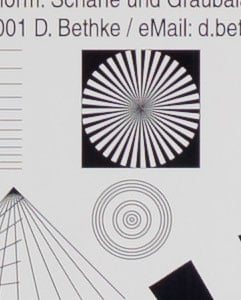 | 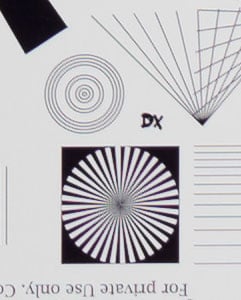 | 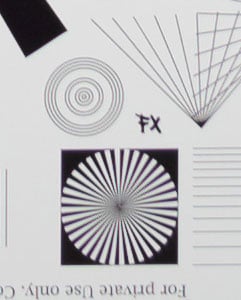 | ||
70mm, f5.6, 100 ISO | 70mm, f5.6, 100 ISO | 70mm, f5.6, 100 ISO | ||
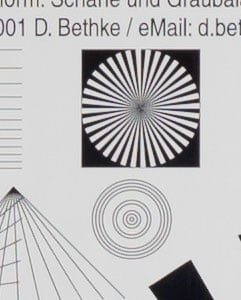 | 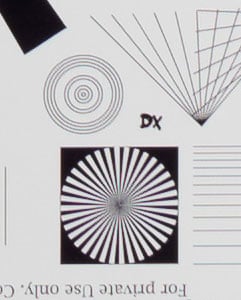 | 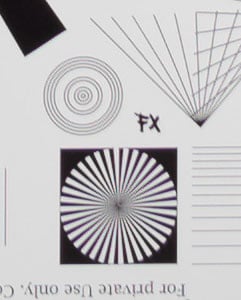 | ||
70mm, f8.0, 100 ISO | 70mm, f8.0, 100 ISO | 70mm, f8.0, 100 ISO | ||
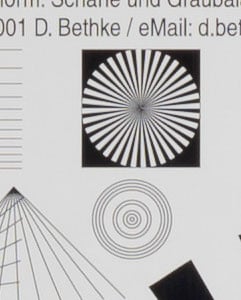 | 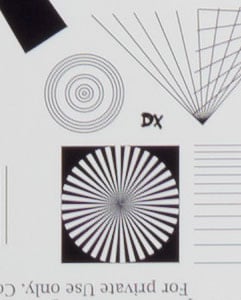 | 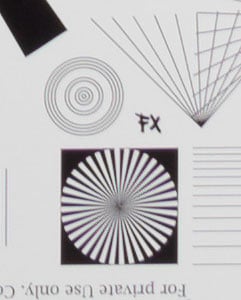 | ||
70mm, f11, 100 ISO | 70mm, f11, 100 ISO | 70mm, f11, 100 ISO |
These 100% crops directly from a 36MP D800 sensor show that this lens is pretty sharp wide open in the center and the DX-corner. The FX-corner shows also good resolution wide open but it clearly profits from stopping down to f4 or even f5.6. Diffraction is setting in at f11. Distortions are minimal.
Performance at 105mm:
Tamron 70-200mm f/2.8G VR with Nikon D800 100% crop from center | Tamron 70-200mm f/2.8G VR with Nikon D800 100% crop from DX-corner | Tamron 70-200mm f/2.8G VR with Nikon D800 100% crop from FX-corner | ||
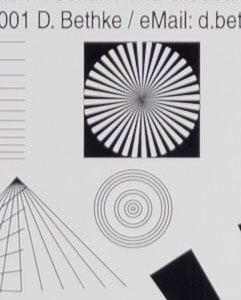 | 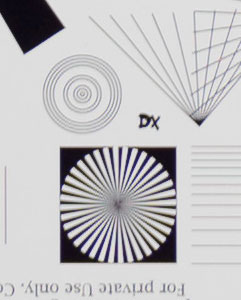 | 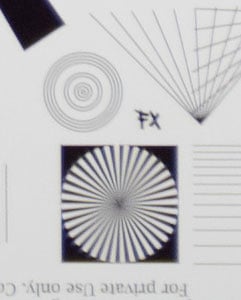 | ||
105mm, f2.8, 100 ISO | 105mm, f2.8, 100 ISO | 105mm, f2.8, 100 ISO | ||
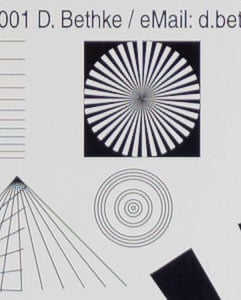 | 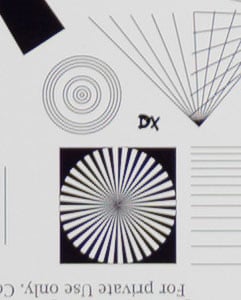 | 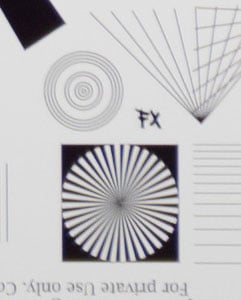 | ||
105mm, f4.0, 100 ISO | 105mm, f4.0, 100 ISO | 105mm, f4.0, 100 ISO | ||
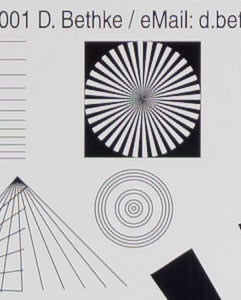 | 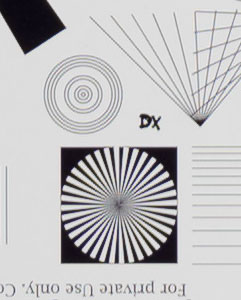 | 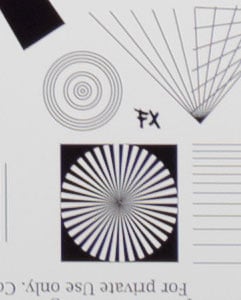 | ||
105mm, f5.6, 100 ISO | 105mm, f5.6, 100 ISO | 105mm, f5.6, 100 ISO | ||
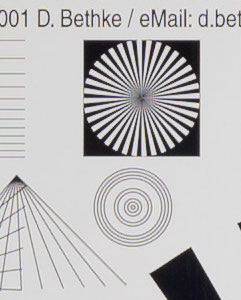 | 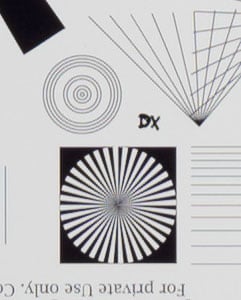 | 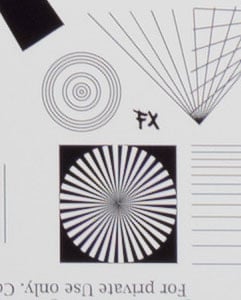 | ||
105mm, f8.0, 100 ISO | 105mm, f8.0, 100 ISO | 105mm, f8.0, 100 ISO | ||
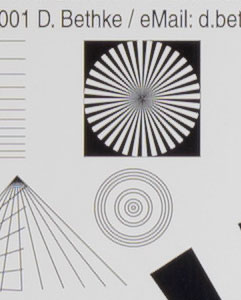 | 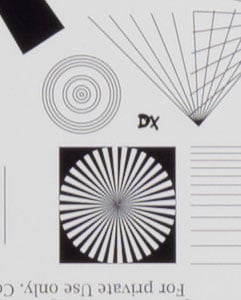 | 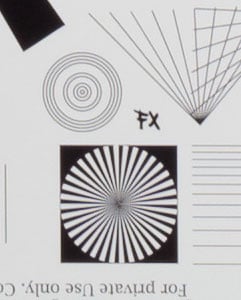 | ||
105mm, f11, 100 ISO | 105mm, f11, 100 ISO | 105mm, f11, 100 ISO |
Again at 105mm the FX-corners are soft and need stopping down to f5.6 to achieve very good performance.
Performance at 155mm:
Tamron 70-200mm f/2.8G VR with Nikon D800 100% crop from center | Tamron 70-200mm f/2.8G VR with Nikon D800 100% crop from DX-corner | Tamron 70-200mm f/2.8G VR with Nikon D800 100% crop from FX-corner | ||
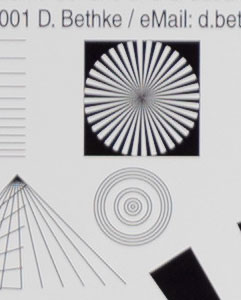 | 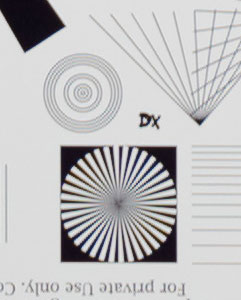 | 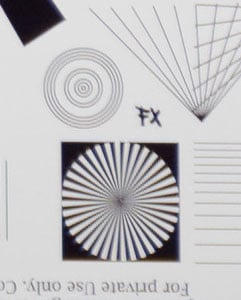 | ||
155mm, f2.8, 100 ISO | 155mm, f2.8, 100 ISO | 155mm, f2.8, 100 ISO | ||
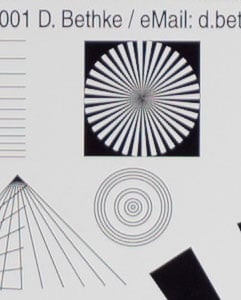 | 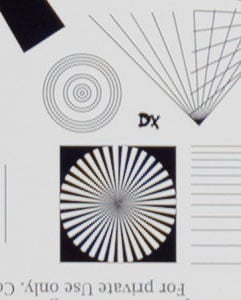 | 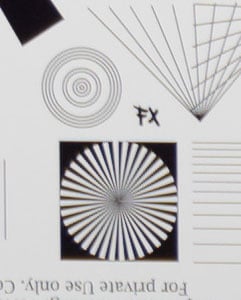 | ||
155mm, f4.0, 100 ISO | 155mm, f4.0, 100 ISO | 155mm, f4.0, 100 ISO | ||
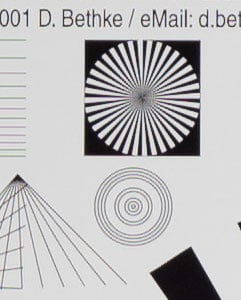 | 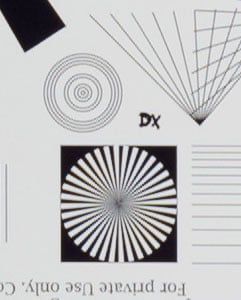 | 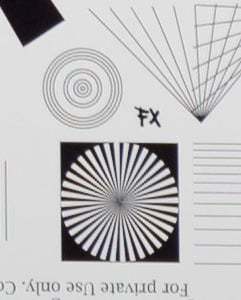 | ||
155mm, f5.6, 100 ISO | 155mm, f5.6, 100 ISO | 155mm, f5.6, 100 ISO | ||
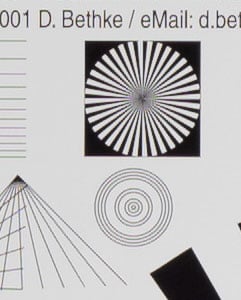 | 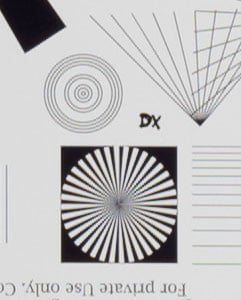 | 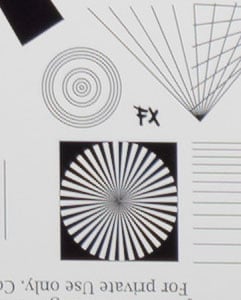 | ||
155mm, f8.0, 100 ISO | 155mm, f8.0, 100 ISO | 155mm, f8.0, 100 ISO | ||
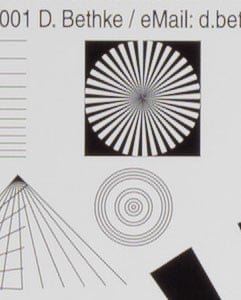 | 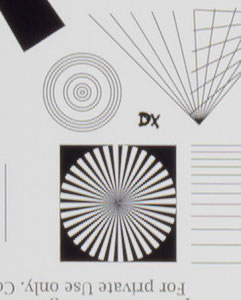 | 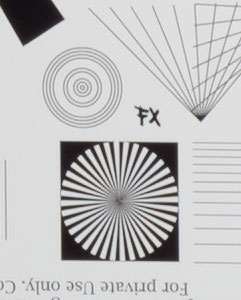 | ||
155mm, f11, 100 ISO | 155mm, f11, 100 ISO | 155mm, f11, 100 ISO |
The DX-corners take a very slight hit at 155mm but the FX-corner is better than at 105mm. Stop down to f4 to achieve very good performance across the frame. A slight pincushion distortion has developed.
Performance at 200mm:
Tamron 70-200mm f/2.8G VR with Nikon D800 100% crop from center | Tamron 70-200mm f/2.8G VR with Nikon D800 100% crop from DX-corner | Tamron 70-200mm f/2.8G VR with Nikon D800 100% crop from FX-corner | ||
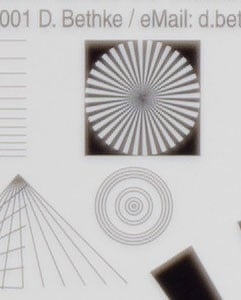 | 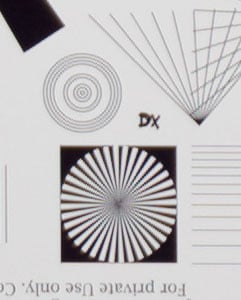 | 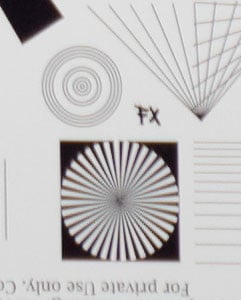 | ||
200mm, f2.8, 100 ISO | 200mm, f2.8, 100 ISO | 200mm, f2.8, 100 ISO | ||
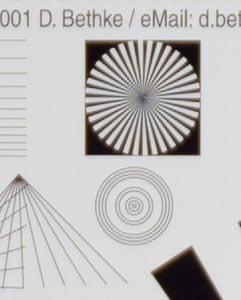 | 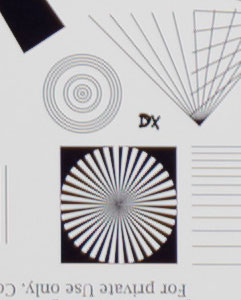 | 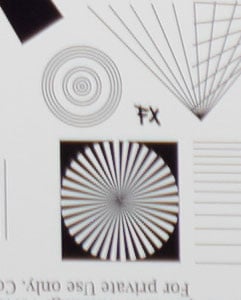 | ||
200mm, f4.0, 100 ISO | 200mm, f4.0, 100 ISO | 200mm, f4.0, 100 ISO | ||
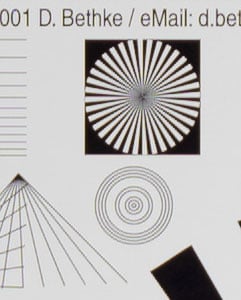 | 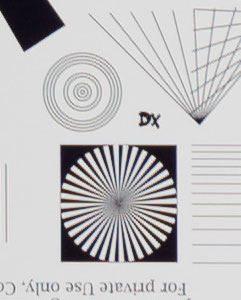 | 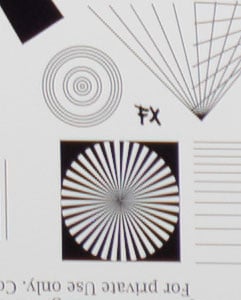 | ||
200mm, f5.6, 100 ISO | 200mm, f5.6, 100 ISO | 200mm, f5.6, 100 ISO | ||
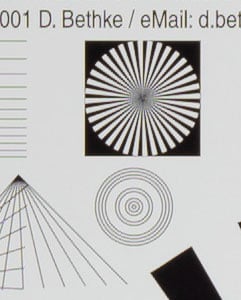 | 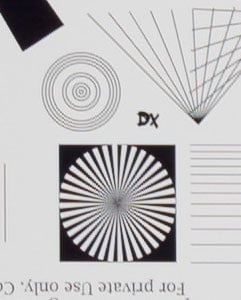 | 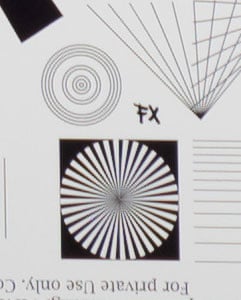 | ||
200mm, f8.0, 100 ISO | 200mm, f8.0, 100 ISO | 200mm, f8.0, 100 ISO | ||
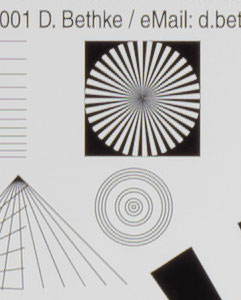 | 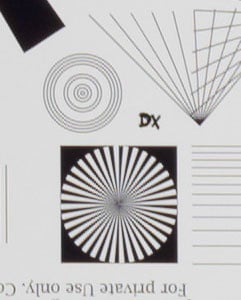 | 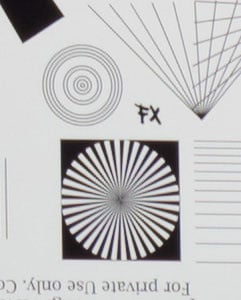 | ||
200mm, f11, 100 ISO | 200mm, f11, 100 ISO | 200mm, f11, 100 ISO |
At 200mm the performance wide open is a bit of a let-down. Pretty strong haloing mars the performance in the center. The DX-corner and FX-corner show less residual spherical aberrations. But stop down to f4 and the center clears up and by f5.6 performance is very good across the frame. I confirmed this behavior on a second copy of this lens.
Performance at large distances
The Siemens-star test-targets are shot at a distance of 40x focal length (i.e. at 4m for 100mm f.l.). But performance of lenses also depends on the shooting distance. Therefore I do another series of test-shots of a landscape dubbed the “Unremarkables” where you can measure distances in km, not meter. Processing was done in Lightroom 4.3 from RAW at Adobe Standard settings. Noise-reduction is set to 0, sharpening to 70/0.5/36/10, with no extra tone or saturation-adjustment. Only white-balance is adjusted to compensate for the blueish light and make these shots comparable to others taken on the same day. There’s no tinkering with vignette-control so you see it here as it is produced by the lens. Focus was acquired at the largest aperture in contrast-based AF and not changed for other apertures.
You can click on each image to access the large original. And if you look at those images you may notice that the lens is decentered: it has a weakness at the lower left corner. Please respect our copyright and only use those images for personal use.
The main image shows the complete scene at f2.8 to give you an impression of the angle of view and to judge vignetting. This is followed by one row of 100% crops at different apertures each from the middle and the right (FX-)border. Let’s start with 70mm focal length:
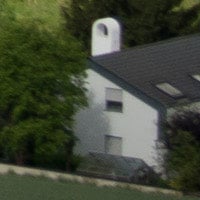 | 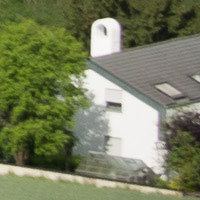 |  | ||
70mm, f2.8, 100 ISO, border | 70mm, f4.0, 100 ISO, border | 70mm, f8, 100 ISO, border | ||
The performance at 70mm wide open is quite impressive. Even the border is usable wide open and achieves very good quality at f8. Vignetting at f2.8 is relatively low.
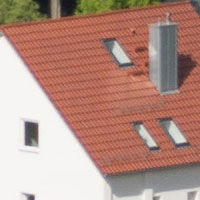 | 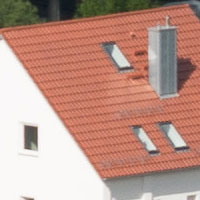 | 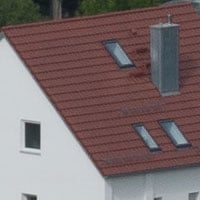 | ||
105mm, f2.8, 100 ISO, border | 105mm, f4.0, 100 ISO, border | 105mm, f8, 100 ISO, border | ||
At 105mm sharpness is impressive too up into the corners of the 36MP FX-sensor. Vignetting is now a little more pronounced.
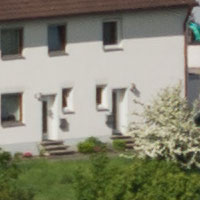 | 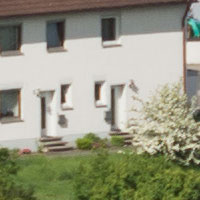 | 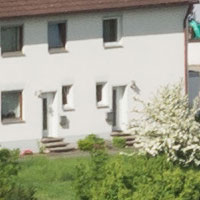 | ||
155mm, f2.8, 100 ISO, border | 155mm, f4.0, 100 ISO, border | 155mm, f8, 100 ISO, border | ||
Same story at 155mm. Used at f8 you can shoot landscapes at very good resolution.
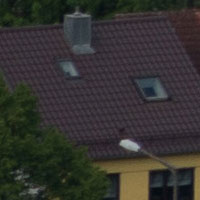 | 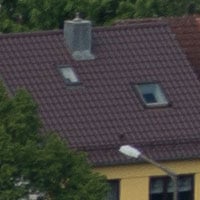 | 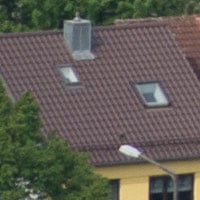 | ||
200mm, f2.8, 100 ISO, border | 200mm, f4.0, 100 ISO, border | 200mm, f8, 100 ISO, border | ||
At 200mm focal length the lens’ center-performance at infinity shots shows the same haloing as the Siemens-star test-shots at f2.8. That’s a pity. Stop down to f4 to get very good acuity in the center and also at the border. As the lens showed some decentering defect at 200mm I took the border crop from the left side in this case. Quite some vignetting can be seen wide open.
All-in-all the lens is an impressive performer near and far with the exception of 200mm focal length at f2.8. Field curvature is a visible issue. But other than that it produces sharp and contrasty images with a very good to excellent performance in the DX image-circle and an FX-corner that benefits from stopping down to f4 or f5.6.
Now let’s check out some Tamron 70-200mm f2.8 VC sample images, or if you’ve seen enough, head over to my verdict.
